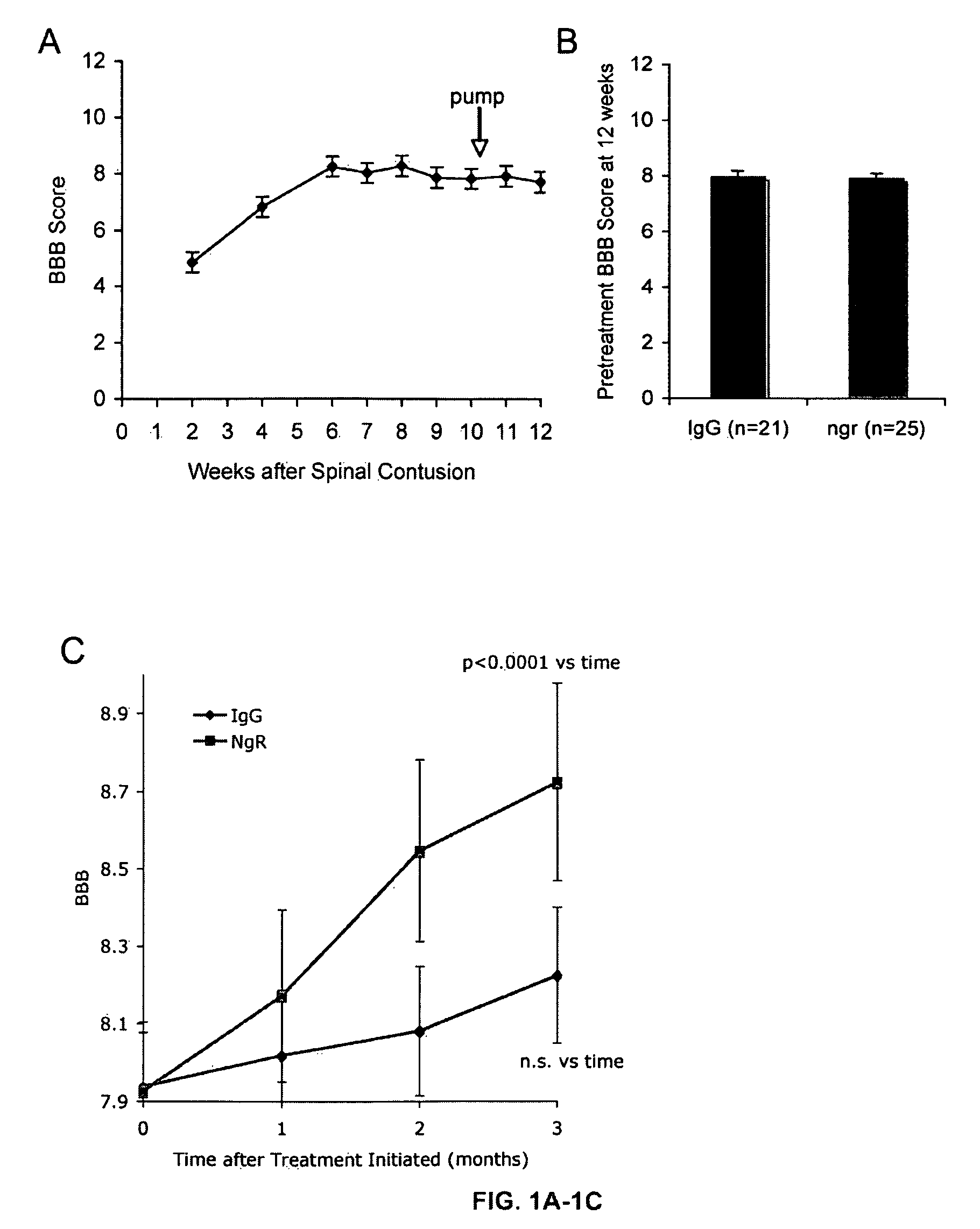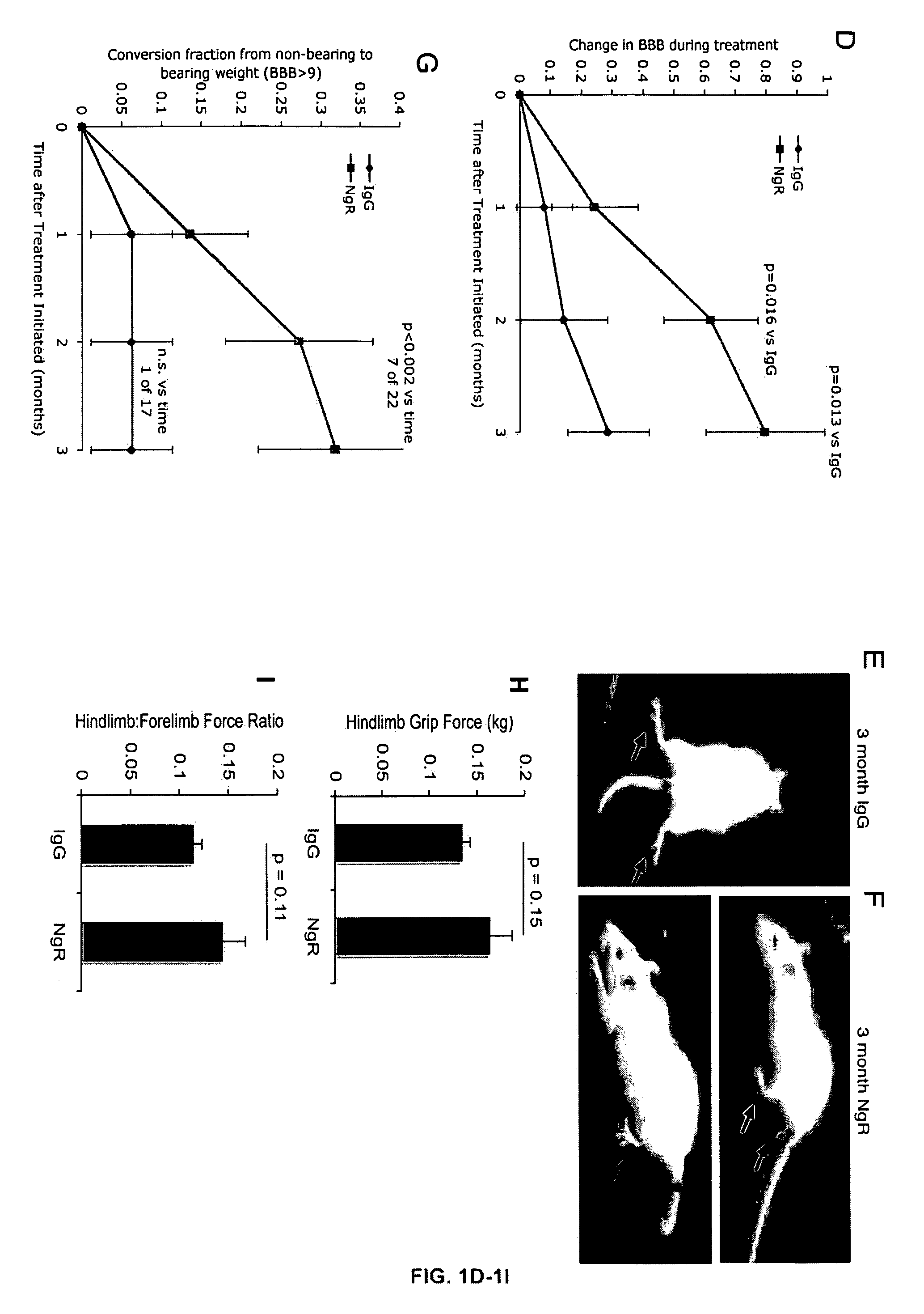Reactivation of axon growth and recovery in chronic spinal cord injury
a reactivation and recovery technology, applied in the field of neurobiology and diseases or injuries, can solve the problems of chronic neuroprotective strategies that are clearly too late to benefit chronic, unable to reactivate and the therapeutic advances of acute spinal cord injuries have been considered incapable of reactivating axon growth and recovery. , to achieve the effect of stimulating axonal growth
- Summary
- Abstract
- Description
- Claims
- Application Information
AI Technical Summary
Benefits of technology
Problems solved by technology
Method used
Image
Examples
example 1
Reactivation of Axonal Growth in a Chronic Spinal Cord Injury (SCI) Model
[0390]1.1 Chronic Rat Spinal Contusion Injury with Prolonged Intracerebroventricular Therapy
[0391]Female Sprague-Dawley rats (11-12 weeks, 250-270 g) were anesthetized with intraperitoneal injection of ketamine (60 mg / kg) and xylazine (10 mg / kg). A laminectomy was conducted at the caudal portion of T6 and all of T7 spinal levels. A T7 moderate contusion injury (10 g, 25 mm) was produced with the MASCIS impactor (D. M. Basso et al., J. Neurotrauma 13:343-59 (1996); X. Wang et al., Ann. Neurol. 60:540-49 (2006); W. Young, Prog. Brain Res. 137:231-255 (2002)). After the contusion the locomotor performance was assessed at one-week intervals by using the BBB score in the open field. Locomotor scores reached a stable level of 8 by 7 weeks after injury.
[0392]In order to avoid any confounding unfavorable effect of the cannula implantation procedure on locomotor scores, a cannula (Alzet® Brain Infusion Kit II; Alza Scie...
example 2
Pet Imaging of Axonal Growth During Chronic SCI Therapy
[0411]2.1 [11C]AFM Imaging by PET
[0412]At the end of a three month treatment period 11 rats in the AA-NgR(310)ecto-Fc group and 13 rats in the IgG group were anesthetized under isofluorane inhalation and [11C]AFM images were obtained by Positron Emission Tomography (PET). The general methods for PET imaging of serotonin transporters (5HTT) have been described (Y. Huang et al., J. Cereb. Blood Flow Metab. 22:1377-98 (2002); Y. Huang et al., Nucl. Med. Biol. 31:543-56 (2004)). The imaging chamber was a bi-level plexi-glass rectangular box, with one rat housed on the top and two rats on the bottom. Oxygen and isoflurane (2-3%) was delivered to the top level via tubing and waste gas was removed via tubing in the front of the chamber. Holes were made in the first level floor to allow for the passage of anesthetic and waste gas. The rats were positioned at the front of the chamber lying on their right sides. Their tails were passed th...
PUM
| Property | Measurement | Unit |
|---|---|---|
| total molecular weight | aaaaa | aaaaa |
| time | aaaaa | aaaaa |
| molecular weight | aaaaa | aaaaa |
Abstract
Description
Claims
Application Information
 Login to View More
Login to View More - R&D
- Intellectual Property
- Life Sciences
- Materials
- Tech Scout
- Unparalleled Data Quality
- Higher Quality Content
- 60% Fewer Hallucinations
Browse by: Latest US Patents, China's latest patents, Technical Efficacy Thesaurus, Application Domain, Technology Topic, Popular Technical Reports.
© 2025 PatSnap. All rights reserved.Legal|Privacy policy|Modern Slavery Act Transparency Statement|Sitemap|About US| Contact US: help@patsnap.com



